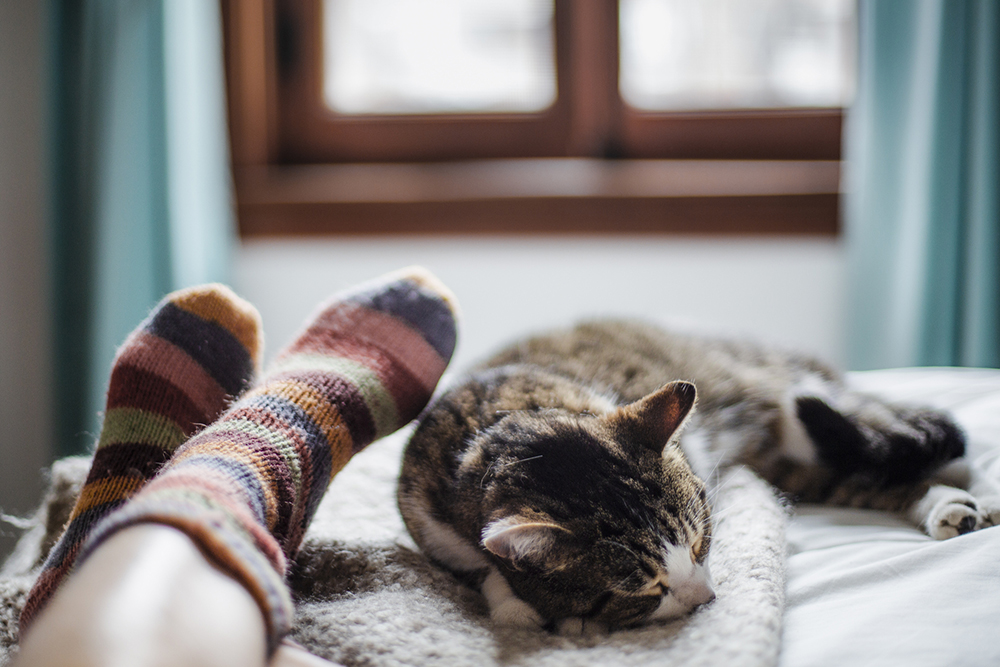How to Fall Asleep Faster, According to Science

Roughly one in three Americans get less than the recommended seven hours of sleep per night—not good considering that insufficient sleep is linked with increased risk for type 2 diabetes, heart disease, obesity and depression, according to the Centers for Disease Control. To max out on actual snoozing and minimize time spent laying awake, give these sleep-inducing tips a go. Keep in mind, if you suffer from disrupted sleep at least three nights per week for at least three months, you may meet the criteria for chronic insomnia. Talk to your healthcare provider, who may connect you with a board-certified sleep physician for the help you need. But if you’re dealing with occasional late nights, these small but effective changes may help.
Switch up your nighttime snacks.
Certain foods may affect how heavy your eyelids feel at night, two of which you’ll find in the produce aisle. Try snacking on sour cherries after dinner for a natural source of melatonin, the hormone that helps regulate your sleep cycle. Another small study has linked kiwi with significantly improving sleep onset, duration and efficiency in adults with self-reported slumber problems. Most importantly, skip heavy meals, caffeine and alcohol (yep, including nightcaps!) at least several hours before bed. All three can keep you tossing and turning, negatively impacting the quality of your ZZZ’s.
Pick a consistent bedtime.
Just like you would train for a 5K by consistently running a couple of miles, train your body to fall asleep by establishing a regular sleep schedule. Switching between 10 p.m. wind-downs on weekdays and crashing at 1 a.m. on weekends, for example, can disrupt your sleep-wake cycle, the Mayo Clinic states. Before you head to bed, calm your mind by writing down tasks for tomorrow or trying a short meditation.
Rearrange your bedroom.
Shut out excess light by adding room-darkening shades or curtains—and ditching screens. That means no scrolling through Instagram before bed and leaving your phone, tablet, laptop and TV at the door. These blue light emitting-screens can trick your body into feeling more awake just as it’s time to fall asleep, so swap your phone alarm for an actual clock. (Pro tip: Turn the face around if you find yourself counting the minutes.)
Use your bed only for sleep.
Speaking of counting minutes, avoid trying to fall asleep for more than 20 minutes at a time, the Mayo Clinic advises. You want to train your brain to associate the mattress with snoozing, not restlessness. If you’re still feeling alert after 20 minutes are up, head into another room and try a relaxing activity (like folding laundry) before giving it another shot. Likewise, enjoy page-turners in the living room—not under the covers—to help reinforce the bed-sleep connection.
Turn down the thermostat.
Making your bedroom colder can actually cue your body that it’s time to sleep. That’s because your circadian drive—a.k.a. the internal clock that regulates wakefulness—is linked to your core body temperature. As you lose alertness at night, your internal temp also drops slightly as well. Making your room a little colder can help cool your body down and subsequently signal your brain that it’s time to rest.
Get more information on how Independence Blue Cross can be a part of your plan for health and wellness.
